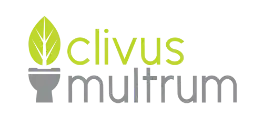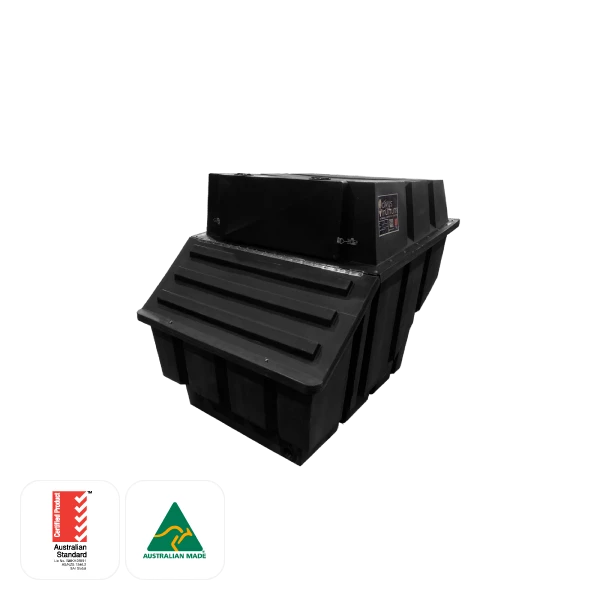
Welcome to Clivus Multrum
Clivus Multrum has been designing and manufacturing waterless composting toilets in Australia for over 50 years. The Clivus Multrum concept was originally developed in Sweden in the 1930’s, and was the first compost toilet in the world.
What we do
- Provide environmentally smart and cost-effective, waterless composting toilets for residential and commercial use across Australia.
- Use no chemicals or water and have no polluting discharge.
- Our toilets save up to 60,000 litres of water per year in the average home and cost far less than regular treatment systems.
Available now from Ecoflo Wastewater Management
Stainless Steel Pardelo Pedestal
$950.00
Clivus Multrum High Profile (CMHP) Composting Toilet
From: $3,830.00
Clivus Multrum CM8 Next Gen Composting Tank
$4,505.00
Clivus Multrum CM14 Next Gen Composting Tank
From: $6,480.00
The Clivus Multrum Approach
Our site specific approach provides solutions for difficult sites, sewered and unsewered areas, and environmentally sensitive areas. We take the time to understand each customer’s unique needs which ensures that our Clivus Multrum waterless composting toilet solutions are correctly specified, installed and maintained.
Clivus Multrum Australia continues to offer quality back up and support for the life of the systems and with distributors around the country, prompt after sales service and advice is assured.
The following are just some of the places where you are likely to find a Clivus waterless composting toilet:
- National Parks & Wildlife Services
- Roadside Rest Areas
- Mines
- Defence Camps in Remote Areas
- Tourist Lodges & Resorts
- Camping Grounds
- Permaculture Centres
- Remote Communities
- Alpine Regions
- Environmental Education Centres
- Scout Associations
- Local Sporting Groups
- Domestic Households
- Holiday Homes/Weekenders
What makes a Clivus Multrum special?
The process works on the same principle as an ordinary garden compost bin. Waste is collected in the composting chamber along with carbon rich material such as wood shavings and garden clippings to obtain a good carbon/nitrogen ratio for composting. Here the materials gradually decompose in the chamber’s aerated environment. Baffles and air channels in the tank control air flow and this accelerates the composting process. A continuously operating fan pulls air down the toilet fixture and out through a vent stack creating a completely odourless bathroom at all times.
Unique design for better performance
The Clivus is the most reliable and efficient composting toilet because of its superior design. An aerated micro-environment is crucial to any composting process and is maintained through the drawing effect of the ventilation fan and air channels through the compost pile. This unique system ensures complete decomposition of the waste during its long residence time. A large inspection door is also unique to the Clivus and allows the user to easily check that the system is functioning efficiently. Another design feature of the Clivus composting chamber is that access to the old and new compost are kept separate. The older, fully composted material settles to the bottom of the chamber where it is easily removed via the front access hatch.
A continuous composting process
The Clivus system is based on a “continuous” composting process in one large chamber, as against multiple smaller chambers that require a restart of the process after emptying. As the organic material decomposes it reduces in volume by up to 90%. The compost pile is therefore always “shrinking in the middle” whilst new material is being added to the top, and finished compost is removed from the bottom of the pile when appropriate.
Advantages of a continuous composting process
- As only one large composting chamber is used, the contents are in a more stable environment and are kept moist through normal use. In “batch” systems where the full chamber must be moved away while the next chamber is being filled, the first chamber often dries out and does not fully decompose.
- There is little risk of overfilling the composting chamber due to the Clivus Multrum’s greater capacity, which makes it very tolerant to extremes in the rate of usage.
- Only a relatively small and manageable amount of finished compost is removed at any one time. This means there is no heavy lifting or moving of smelling bins.
- A larger area of compost bed means there will be greater liquid evaporation without the use of heaters. Urine is well-treated by passing through the larger compost bed and converted to an innocuous liquid.
- The relatively simple design of the Clivus Multrum renders it far less susceptible to mechanical problems than other composting systems.

What are the environmental impacts?
The environmental benefits of using a composting toilet are numerous:
Protect groundwater
Conventional ‘waste’ treatment systems (both sewer and septic systems) mix human waste with a large amount of water, and both discharge most of the nutrients into water: sewers into oceans, bays, and rivers; septic systems indirectly into groundwater. In oceans, rivers, and bays this causes first, the proliferation of aquatic plant life, then, as the plant life dies and decays, the removal of oxygen from the water and finally, the destruction of habitat.
Clivus Multrum composting toilet solutions evaporate excess liquid and diffuses it into the atmosphere, meaning no contaminated polluted water is released unnecessarily into our water supplies. Any liquid that is not evaporated flows through an excess liquid drain into a small gravel pit. This may be only 1.5 litres per person per day compared with a septic system which can allow seepage of up to 125 litres per person per day (sewerage mixed with all other greywater).
Recycle nutrients
For nearly all of our agricultural history, humans have practiced sustainable farming, including the use of composted human waste for fertilizer. Only in the second half of the 20th century did people begin to abandon the principles of reuse that were once required by our circumstances.
The benefit of a composting toilet is that aerobic bacteria works to break down human waste into useable elements like water and carbon dioxide. Both of these are dissolved into the atmosphere, along with the residual moisture that is evaporated.
What remains of the waste has reduced in volume by about 90% and is chemically, biologically and aesthetically similar to topsoil. This dry-compost material is collected via the inspection door and can be used as garden compost.
How does the composting work?
Composting is the bio-chemical decomposition of organic matter by aerobic organisms, i.e., organisms which get oxygen from the atmosphere and give off carbon dioxide. Composting takes place in all soils which support plant and animal life.
This process is distinct from anaerobic decomposition, which takes place naturally in water-saturated environments such as swamps, and is typical of septic tanks. Anaerobic, or liquid-saturated, conditions produce methane and the offensive odors associated with septic systems. Clivus Multrum composting toilet solutions use aerobic decomposition in the controlled environment of the compost chamber and, therefore, cannot produce methane.
The Clivus Multrum composting toilet slowly breaks down both urine and human waste into stable, organic compounds within the composting chamber. The sloped design (“Clivus Multrum” means inclined chamber) separates urine from human waste.
As urine moves by gravity to the lowest point of the composting chamber, bacterial action converts urine (urea and ammonia), into a nitrogen-rich liquid that can be used as a fertilizer. Use of the liquid-end product as a fertilizer may or may not be regulated by local authority.
The separation of urine from human waste ensures that human waste remain in an aerobic environment which includes bacteria, fungi, insects and compost worms. The organisms slowly break down human waste into a dry- compost material that has chemically, biologically and aesthetically similar to topsoil. The dry end-product contains a wide array of plant nutrients and is intended to be used as a fertilizer/soil conditioner. Its use may or may not be regulated by state and local government authorities. Furthermore, the composting process reduces its volume, which is mostly water, by over 90%.
Carbon dioxide (CO²) and water vapour are the primary gases created by aerobic decomposition and these are extracted by a continuously operating fan.
Potential human pathogens are either killed by predatory organisms, a lack of water or by the long retention time in the system, as demonstrated by USA’s National Sanitation Foundation field testing. No compost is removed before a year of use and it is often several years before any is taken out of the compost tank.








